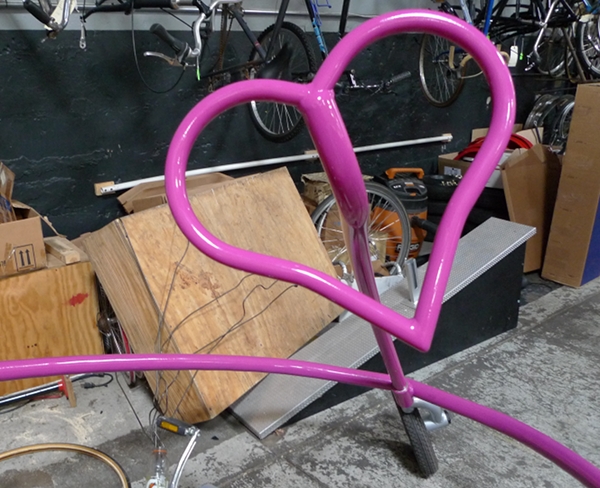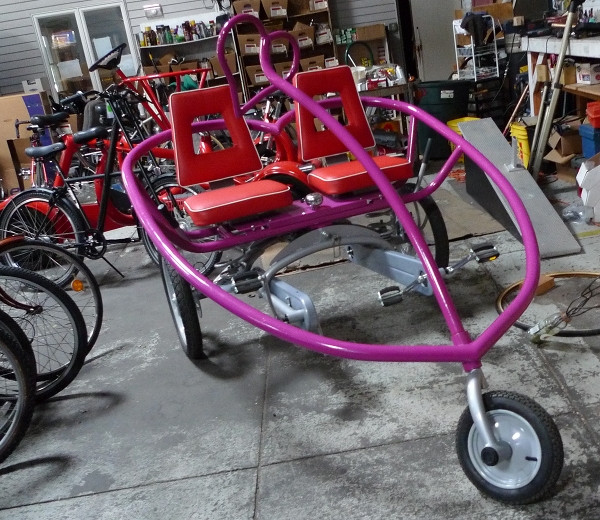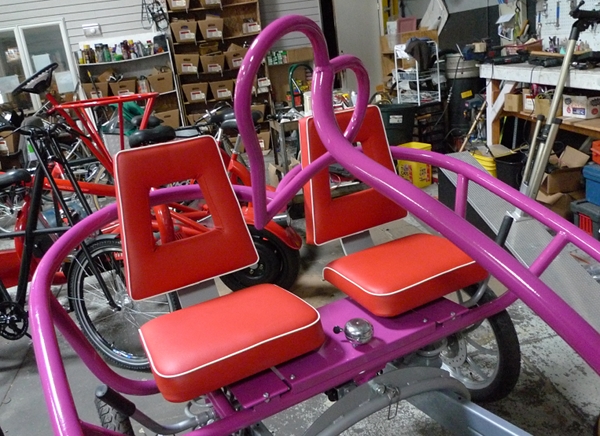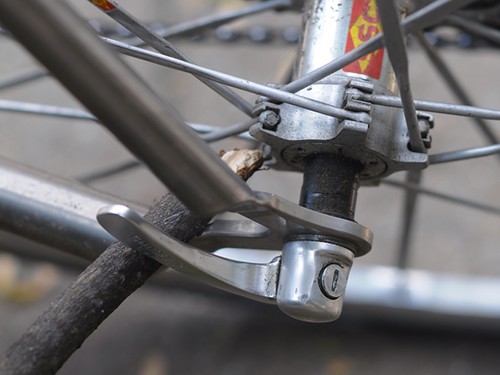
A little while back, someone suggested that I read Bill Strickland's Ten Points, and before I knew it I was interacting with Bill Strickland himself and he sent me a copy. When the book arrived, the cover alone induced a pre-emptive sense of nostalgia. A cyclist walking his bike into the fading sun, beneath the overhanging trees, as if savouring the sweet devastation of defeat. Of course this would be on the cover of Bill Strickland's memoir.
Bill Strickland is the editor of Bicycling Magazine. He lives in Pennsylvania. He races for Kapelmuur Independent. And he writes, a lot. Articles for various cycling and sometimes non-cycling magazines, a few books, blog posts. The first time I read something by him was maybe in Rouleur a year ago, and then I began following him online. I remember it initially surprised me that a person who wrote like Bill Strickland was the editor of Bicycling. Those guys are all about nutrition and training and race coverage and roadbike reviews. Strickland's writing is evocative and sensual and self-consciously sentimental. And that's just on his instagram account.
Ten Points is an unconventional memoir. It's inextricably tied to bicycle racing, but is not really about it. Bicycling is more of a metaphor, an explanation, a case study in magical thinking. At the start of the book, the author tells his little daughter that he will score 10 points during a single racing season, then proceeds to participate in criterium races and fail spectacularly week after week.
But this plot line merely serves as a trajectory for the real story - a story of surviving childhood abuse, emerging damaged, then wondering for the rest of your life whether you're human or a piece of garbage. In adulthood, the author considers himself cursed, a monster. He struggles to stay in control, but the past haunts him and he worries about being a fit parent and husband. He believes that cycling keeps the monster in him at bay. And winning 10 points for his daughter might just have the power to lift the curse entirely.
Reading the memoir and trying to process it as such, I must admit that I found the 10 points theme to be overbearing and at times distracting. The writing is good. Bill Strickland excels at creating a visceral sense of understanding between himself and the reader. Repeatedly I found myself lost in his past, in his life, in his very sensations. In contrast to this, the overarching storyline of the 10 points feels forced, packaged. Like maybe the author had written the book differently, and then some editor swooped in and tried to make it more marketable for those who like the "top 10 ways to tackle hills" types of articles. I don't know how else to explain it.
Could the story have been told without the 10 points theme being so overt? I honestly think that it could. The book is really a rich collection of snippets, flashbacks to various incidents in the writer's life, and there are other ways in which these could have been tied together. The narrative style is jewel-like, seductive, while somehow also managing to come across as sparse and reserved. It is part American Gothic, part John Updike, but replete with its own, uniquely Stricklandian, characteristics.
In a way Ten Points reads more like a novel than a memoir, and some characters feel more believable than others. The incidents from the past, despite how dramatic some of them are, read as believable, as do the parts about racing. But in the present-day dialogue with the wife and daughter, the things they say are sometimes too well-phrased, too conveniently meaningful. In those instances I could practically feel the author trying to wrangle them into the 10 points plot.
At his best, Bill Strickland is the sort of natural storyteller who can engage an audience with a description of an Idaho cornfield. He can stir the reader into alternating states of wistfulness and fear within a single paragraph. He is a master of subtle foreshadowing. I want more of all that, less meta-narrative.
Writing about this book, I find myself wishing I hadn't interacted with the author prior. Because now I am hyper-aware of him as a real person and nervous about how he will feel reading this. But maybe that's arrogant. After all, who the heck am I and what does it matter what I think. I am describing the book as a reader, not as a critic. And I continue to follow Bill Strickland's writing with interest.
 Yes, you guessed it: "Love Bike"! Clearly I had to photograph and share such a masterpiece on this magical day created for us by the greeting card industry.
Yes, you guessed it: "Love Bike"! Clearly I had to photograph and share such a masterpiece on this magical day created for us by the greeting card industry. This is the entire bike in its glory.
This is the entire bike in its glory. I imagine the handles next to the seats (love seats?) are for steering. The lovers are meant to share a bell. Magnificent! The Love Bike is for sale, but Dan (owner of DBC City Bikes) cautions that one should view it "as a sculpture," because as a bicycle it is not very efficient. Efficiet schmefficient! Just imagining this beauty rolling along Mass. Ave., taking the lane and being honked at by bewildered drivers, brings a smile to my face.
I imagine the handles next to the seats (love seats?) are for steering. The lovers are meant to share a bell. Magnificent! The Love Bike is for sale, but Dan (owner of DBC City Bikes) cautions that one should view it "as a sculpture," because as a bicycle it is not very efficient. Efficiet schmefficient! Just imagining this beauty rolling along Mass. Ave., taking the lane and being honked at by bewildered drivers, brings a smile to my face. The site of the burying ground for the 44th Regiment is marked “Ind 3” at the bottom center of the diagram.
The site of the burying ground for the 44th Regiment is marked “Ind 3” at the bottom center of the diagram. The tall post to the right marks the center of the burying ground for the 44th Indiana Infantry. The stones in the foreground belong to men from Iowa regiments.
The tall post to the right marks the center of the burying ground for the 44th Indiana Infantry. The stones in the foreground belong to men from Iowa regiments.








 Someday, I'd like to spend some time researching these men... a quick search of the Internets garnered this bit of information on marker 441, shown above: George Weamer enlisted while a Columbia City, Indiana resident as a Private in Company G, 44th Indiana Volunteer Infantry on November 22, 1861, mustering into service the same day. He was transferred to Company E on January 2, 1862 and was wounded April 6, 1862 at the Battle of Shiloh. He died of his wounds April 17, 1862.
Someday, I'd like to spend some time researching these men... a quick search of the Internets garnered this bit of information on marker 441, shown above: George Weamer enlisted while a Columbia City, Indiana resident as a Private in Company G, 44th Indiana Volunteer Infantry on November 22, 1861, mustering into service the same day. He was transferred to Company E on January 2, 1862 and was wounded April 6, 1862 at the Battle of Shiloh. He died of his wounds April 17, 1862.













 On the day after Irene we had beautiful weather and I went for a 40 mile ride on the Seven roadbike that I scandalously still have on loan (and will soon be reviewing). Though a preliminary cleanup of the roads had already taken place, branches and other debris were still scattered in some areas and I thought the biggest challenge would be cycling on narrow tires. However, that part was fine - the wheels rolled easily over the occasionally unavoidable obstacle, with the bike either retaining or quickly regaining stability every time. But toward the end of the ride I began to feel as if the rear wheel had an odd little bounce to it. It was barely perceptible, but I decided to stop and check it out - thinking it was probably a flat tire. What I saw was very different: The quick release of the rear wheel was open and the wheel was sitting completely loose in the dropouts. At first I thought that the lever was broken or the skewer had somehow snapped. But everything was fine and once I re-secured the wheel the bike was good to go. My theory is that a tough little branch must have gotten jammed in there, prying open the quick release. I suppose it was lucky that the wheel did not come out of the dropouts entirely, and lucky that the branch did not jam the spokes.
On the day after Irene we had beautiful weather and I went for a 40 mile ride on the Seven roadbike that I scandalously still have on loan (and will soon be reviewing). Though a preliminary cleanup of the roads had already taken place, branches and other debris were still scattered in some areas and I thought the biggest challenge would be cycling on narrow tires. However, that part was fine - the wheels rolled easily over the occasionally unavoidable obstacle, with the bike either retaining or quickly regaining stability every time. But toward the end of the ride I began to feel as if the rear wheel had an odd little bounce to it. It was barely perceptible, but I decided to stop and check it out - thinking it was probably a flat tire. What I saw was very different: The quick release of the rear wheel was open and the wheel was sitting completely loose in the dropouts. At first I thought that the lever was broken or the skewer had somehow snapped. But everything was fine and once I re-secured the wheel the bike was good to go. My theory is that a tough little branch must have gotten jammed in there, prying open the quick release. I suppose it was lucky that the wheel did not come out of the dropouts entirely, and lucky that the branch did not jam the spokes.














